Discover what you never knew makes a difference in garment quality and how to recognize the greatness in clothing. Understand about the composition of fabric, how garments are joined together, how patterns are going to be aligned, etc. Find the new level of your shopping and be wise; buy clothes that will serve you for years.
What is a high-quality Quality Fabric?
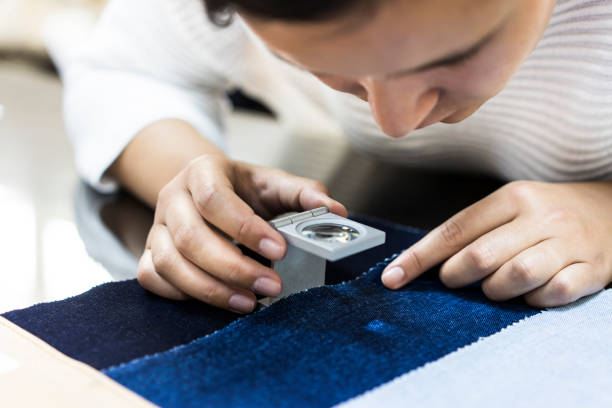
Luxury fabric for use in the production of high-end garments should have durability, softness, breathability and be non-shrinking, non-pilling and non – fading. It could be woven of natural fibers like cotton, silk, wool or linen or high-quality synthetic fibers such as polyester or nylon. The weaving or knitting process is carried out in a highly methodical manner so that the same is aesthetically as well as structurally consistent and therefore has the plush feel, apart from durability and class. Furthermore, premium fabric can also be subjected to one or many tests to pass certain quality standards before it can be used, fulfilling the users expectation as to the quality of both performance and durability as well.
Characteristics of High-Quality Fabrics
There is a set of features that differentiate fabrics of high quality from those of low quality. Here are some key features to look for:
- Material Composition: Fabrics of better quality are obtained from natural fibers like cotton, silk, wool, linen, and some of the better synthetic fibers like polyester or nylon. These fibres are strong, water-resistant, comfortable to wear, and of much higher quality than fake synthetic or blended fabrics.
- Durability: Due to the fact that quality fabrics are tough and durable, they cannot be easily worn out. They have the ability to retain their scrupulousness even after use, washing, and for long periods of time. Recent fabrics, which are tight-knit, are considered to be more durable than others.
- Texture: Premium fabrics are fine and silky to the touch and they must have an even surface. They give a feeling of comfort and are not rigid, rough to the touch or uneven when pressed on.
- Color Fastness: It can be further mentioned that the quality fabrics should not fade away in color even when washed many times or when exposed to direct sunlight.
- Breathability: Fabrics such as cotton, linen, and wool are natural fabrics that do not trap heat, thus they are good insulators of air, which makes them suitable for use under different weather conditions.
- Absorbency: Materials such as cotton and linen possess good absorbencies; they aid in drawing moisture away from an individual’s body and thus making the person comfortable.
- Weight: Gentlemen’s fabrics are mostly heavy in weight, which enhances their durability and feel on the skin.
- Thread Count: Speaking of fabrics, more often than not, a higher thread count in ones like cotton generally means better quality. A high count would mean that a given area would contain more threads per inch, thus giving the material a sleeker, softer, and more long-lasting finish.
- Finishing: Fabrics that are of good quality may be finished through techniques such as mercerization or brushing, which improve the aesthetic value, feel and effectiveness of the fabric.
- Resistance to Wrinkles: To summarize, no fabric type could be considered completely free from wrinkles; however, most high-quality fabrics crease less often and do not look less clean and orderly within a shorter period of time.
- Environmental Impact: More and more, high-quality fabrics are also being judged by their sustainability and ecological characteristics.
What are the Tips on How to Determine High-Quality fabrics?
It is necessary to consider several characteristics and properties of the raw material to establish material quality in relation to fabric production. Here are some tips to help you identify high-quality fabrics:
Fiber Content
Examine the label and look at the fiber content. Some of the most popular fabrics in high-quality clothes are those made of natural materials, and these include cotton, wool, silk, and linen. Such natural materials are known to be more durable and comfortable as opposed to synthetic ones.
Fabric Weight and Density
Basically, take your hands to run through the garment and examine how heavy or compact the fabric is. Fabrics of high quality generally have a tight weave, a large weight, and clean interlinking, which gives them the feeling of strength and toughness. This way, one can easily tailor lightweight fabrics with equal dexterity as they have durability, The material is tightly woven and made with finer fibers and yarn.
Texture and Hand Feel
The fabric has a smooth and silky touch (which should not apply for cotton garments made of silk that are produced for a textured look). The fabrics can also be characterized by a good touch, that is a nice smooth feel, and homogeneity.
Drape and Flexibility
In particular, pay attention to the part of the dress where one fabric is put on top of another. The material usually used in high-quality garments is one that tends to have a nice, typically smooth finish and will slide across your body when you put it up.
Color and Dye Quality
Approach the fabric and look at the color. Apparently, the highest-quality silk materials are plain-colored and bright, which makes the fabric less susceptible to quick fading. Light spots and irregular patches of the color are other issues that should be looked at, as they are typically a sign that the quality of the fabric was not the best.
Stitching and Construction
Check the quality of sewing on the piece of clothing. Sophisticated materials tend to be applied together with fine finishing processes. Stitches should also be neat, properly placed, and even with appropriate and equal spacing in between them, and the thread used to sew the cover seams of the garment should not be left dangling.
Pattern Alignment
In the case of a fabric with a certain print, the print must be aligned specifically on the fabric facing the seams and any other joining point. Fabrics of high quality are followed properly and extremely meticulously for cutting and assembling them to ensure that there is a correct matching of different patterns improved quality of these fine fabrics, down to high-quality silk, is well enhanced by proper cutting and assembling of the garments.
Stretch and Recovery
The key characteristics to look for include The stretch and recovery of fabrics such as knits or those with some elastane in them. The best brands ofstretchy fabrics will come back to their original size after washing and will not be distorted or too baggy.
Pilling and Abrasion Resistance
Feel the cloth, moving it slightly with your fingers, to see if it develops the rough aspect of forming small balls of fiber or pilling. Pilling is also checked because high-quality fabrics shrink less and should not pill, which shows that the fabric is abrasive.
Luster and Shine
Observe the fabric’s luster. flaxen and silky feel characteristic for natural fabrics such as silk or wool does not provide the fabric with a gloss, as most synthetic fabrics do, being as visually similar to plastic. One thing that can indicate that there is a high-quality fabric is that its luster is consistent and the resulting fabric has a pleasant glow to it.
Wool Fabric
Wool fabric is preferred due to the fact that it is warm and used in making clothes that are worn during cold seasons, while at the same time being a good fabric that allows air circulation, hence can be used in making clothes for all occasions. Its functions make it a very useful fabric in that it absorbs sweat and regulates temperature, thus keeping the wearer dry.
Types of High-Quality Wool fabric
Wool fabric can be of excellent, high-quality leather or of poor quality. There are many subtypes of the fabric, and the quality depends on a number of factors, primarily origin and subsequent processing. Here are several notable varieties:
Merino Wool: Coming from Merino sheep, which are mainly reared in Australia and New Zealand, Merino wool is famous for its thin strands, exquisite touch, and ability to retain warmth. It is applied for base layers, suits, and luxury knitwear for which cashmere is preferred fabric material.

Cashmere: High-quality cashmere wool is gotten from the undercoat of Cashmere goats and is genuinely popular for being very soft, light in feel and highly insulating. Cashmere is precious material applied for making garments since these items are lovely and heat the body wonderfully.
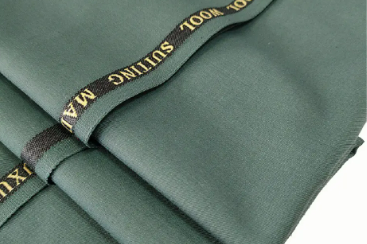
Mohair: Mohair arises from the Angora goat’s fleece, with its features being a soft sheen, sturdiness, and flexibility. With comfortable, soft hand, smooth and lovely drape, and fine and lustrous appearance, it is widely used in the production of high-quality men’s suit cloth, overcoats, upholstery fabric, etc.
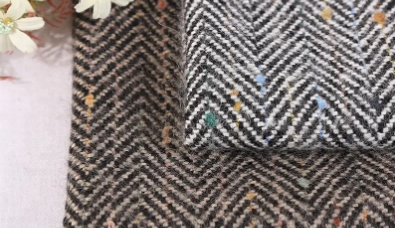
Alpaca Wool: Alpaca is natural wool obtained from alpaca that was originally bred in Andean region of South America. It gives luxuriously soft hand feel, is extra warm and is also allergen-free. It is preferred in making of quality sweaters, scarves and blankets.
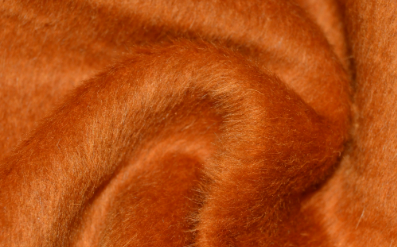
Lambs Wool: Lambswool is the wool of first shearing and comes from young sheep that are considered to be specially soft, stretchable, and lightweight. Thus, it is often used in fine knitwear, blankets and accessories since it is very comfortable and warm at the same time.
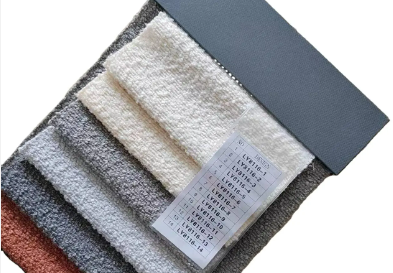
Shetland Wool: Shetland wool is derived from Shetland sheep, that are natural breed from the Shetland Islands in Scotland. Appreciated for its strength, softness, and coarseness, as well as being a favorite for the creation of the traditional Fair Isle sweaters and rustic outdoor wear.
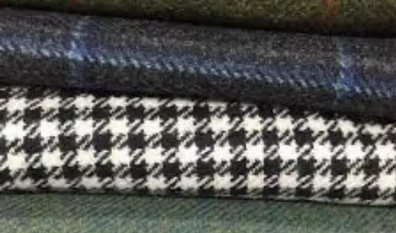
Tweed: Tweed is a kind of woolen fabric that is known for its roughness and deep, deep solid-colored or plaid looks. First seen in Scotland, tweed is mostly incorporated in suits, blazers, and overcoats due to the sturdiness of its fabric and the vintage look.
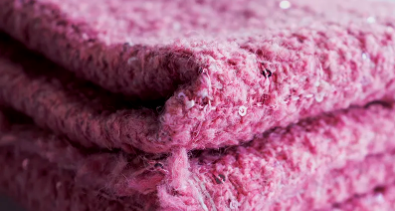
Worsted Wool: Worsted wool is made by spinning in a parallel way, and the fibers are parallel to each other. The weaving of worsted wool is compact and tight. Worsteds are fairly known for their stronghold and smooth appearance & are ideally used in suits and fine apparel.
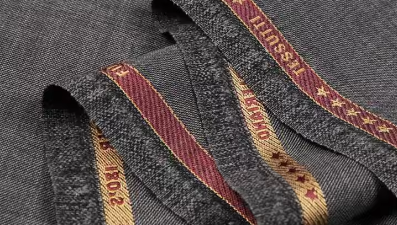
Vicuña Wool: Vicuña wool being obtained from the alpaca-like animal, vicuña is one of the softest and finest fibers known to man. Fine, warm, soft and very rare, vicuña wool is used in ultra-luxury products such as garments and accessories.

Typically, these types of high-quality wool fabric demonstrate the versatility and quality of natural fibers, as well as individual differences and suitable materials according to climate and usage.
Features and characteristics of premium wool fabrics
That is why premium wool fabrics are characterized by several distinctive features and properties that separate them from other wool materials. Here’s a breakdown of their notable attributes:
- Fine Fiber Quality: Wool used in the development of premium fabrics is sourced from fine fibers, most of which may be obtained from particular breeds of sheep for instance, the Merino sheep.
- Exceptional Softness: The quality premium wool fabrics are extremely soft to touch and thus preferred, particularly in apparel that comes into direct contact with the skin.
- Superior Insulation: Wool is naturally a very good insulator and the best wool fabrics will have this feature to an even higher degree. It provides good insulation when it is too cold without the added weight of the material to make you overheat.
- Moisture Management: Superior wool fabrics should be quick-drying since they do a good job of drawing moisture away from the skin and spreading it out.
- Durability and Longevity: Luxury wool fabrics are made to be long-lasting, as they use the best fibers and are impeccably sewn.
- Elegant Drape and Structure: Using high-quality wools provides garments with great fluidity and exceptional shape, which is what block designs lack. They are quick and were able to give pretty clean, unencumbered lines, adding to the elegance and free-flowing design of the product.
- Rich Color Retention: Premium wool fabrics maintain their deep, saturated hues for many years due to the modern technologies of wool fabrics’ production with the help of dyes and the structure of wool fibers.
- Versatility: First, it should be noted that premium wool fabrics are extremely useful and can be utilized in various garments and end uses.
- Sustainable and Eco-Friendly: Due to high quality and luxury, most of the super-quality wool fabrics are manufactured from eco-friendly concepts, including animal-friendly, land-friendly and environment-friendly modes of production.
Synthetic fabric
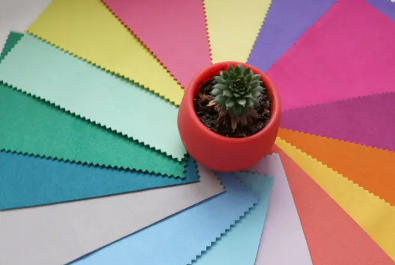
Manufactured fabrics or synthetic fabrics can be defined as fabrics made of artificial fibers or yarns derived from natural materials such as petroleum, cotton, polyester, and nylon that are designed to have certain characteristics such as wear resistance, elasticity, rapid or slow absorption of moisture, and/ or resistance to water, among others. Examples of their uses include garments, furnishing, accessories, etc.
Different Types of Synthetic fabrics
They are man-made fabrics produced from a collection of resources other than bio-sourced materials, such as plant- or animal-derived fibers. They are available in a broad spectrum of properties and find use in a multitude of industries. Here are some common types of synthetic materials and fabrics:
- Polyester: Polyester is on the list of the most popular types of synthetic fibers all over the world. It is characterized by various features such as durability, no wrinkles and good color fastens.
- Nylon: Nylon is one more synthetic fiber that is famous for its strength, elasticity and rather high abrasion resistance.
- Acrylic: It is softer than other synthetic fibers and cheaper and lighter than wool, which it mimics.
- Polypropylene: Polypropylene is a man-made, light-weight fiber that has the functional use of passing water away from the skin.
- Spandex (Lycra/Elastane): It is ideally a synthetic fiber that is characterized by its elasticity and stretchability. It is often mixed with other fibers with the aim of making them more elastic for uses such as the production of leggings, swimwear and other sports wear.
- Rayon: Even though originated from natural material such as wood pulp, this fabric is partly synthetic and thus known as rayon.
- Polyethylene: is extensively used to make outdoor wears, tents and backpacks because of its strength and ability to withstand harsh weather conditions.
- Polyurethane: Polyurethane fiber is very useful for the purpose of making coatings or laminates on other fabrics to provide hardness, stretchability and waterproofing.
- Vinyl (PVC): Vinyl is a type of material that is widely employed in the production of synthetic leather and furniture coverings, as well as raincoats.
High-quality cottons
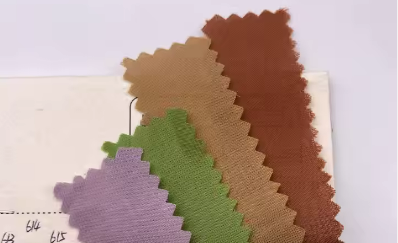
Cotton types refers to fabrics made from long long-staple fibers, such as Egyptian or Pima cotton, which are very soft, enduring and let air through. These fabrics allow the skin to feel sumptuous and are additionally characterized by their ability to wick away moisture better than conventional fabrics.
Applications of high-quality cotton in garments and textiles
High-quality cotton has wide use in garments as well as textiles due to low quality and properties. Here are some of cotton garment common uses:
- Apparel: Cotton fabric is used in the production of clothes like T-shirts,-shirts, dresses, skirts, pants, and underwear, among others, since it is of high quality.
- Bedding: Cotton is also widely used in creating other bed linens such as sheets, pillows, and duvet liner. Cotton fabrics also provide comfort and quality feel on the skin, resulting in quality sleep.
- Towels: Cotton is the most desired fabric for the production of towels because of its excellent absorbent qualities and the feel of the fabric when it is against the skin. A high-quality cotton towel is normally made partly from long staple fiber; it is soft, more absorbent, and dries very fast, that makes them suitable to be used as bath towels, hand towels and wash cloths.
- Baby Clothing and Accessories: It is soft and ideal for babies clothing, blankets, bibs and burp cloths, which are very essential to the babies. Comfort and breathability for infants and young children are provided through the high-quality cotton fabrics.
- Active and Sportswear: Various types of cotton, such as cotton blended with elastane or spandex, is used in apparels like active wear and sportswear because of its stretchable and moisture-absorbing nature.
- Denim: Cotton denim is one of the most popular fabrics in the fashion industry today due to its tough and multifunctional nature.
- Home Furnishings: Cotton fabrics are used in other home accessories such as furnishing, furniture, curtains and table cloths. Cotton as furniture materials is long-lasting and comfortable for users; cotton as curtain and tablecloth creates a graceful and elegant home environment.
- Accessories: Cotton is also used in other things, such as scarves; it is also used in making of hats, bags, and gloves.
High-quality garment

Better clothing characteristics involve the application of stunning fabrics like long-staple cotton or fine wool, as well as elaborate stitching, making the textile products very soft, durable, incredibly smooth, and long-lasting. A lot of care is taken in their making and sewing, right from the seams and buttons even to the creases, and there are no rough edges on the pristine clothes. Cut to provide comfort and to last, these articles incorporate classic shaping and wash-wear construction with practical details like pockets, buttons or cuffs.
What are the Factors that Contribute to Garment Quality?
There are many components which define the quality of a garment depending on its usage and the sites it covers for the human body. Here are some key factors:
- Fabric Quality: Evaluating the quality of fabric, particularly when it is in use on garments, cannot be overemphasized. Fabrics of high quality, be it natural ones like cotton, wool, or silk or artificial ones like polyester or nylon, are useful in the aspect of giving a garment the capability of lasting longer, being comfortable to wear, and also giving the garment a good outlook.
- Construction Techniques: Fashion products’ construction plays an important role in the garment’s quality. Due to the valuable construction methods that are used to stitch well, use great seams, and also have nice finishes, it is important for the garment to sustain its form and strength as expected.
- Fit and silhouette: When clothes fit perfectly, they boost the feeling of comfort and even look better. Seamstress and tailoring entail procedures that will allow the garment to fit well on the body and move properly to the clothing trend desired.
- Attention to Detail: Various aspects such as choice of fabrics, color and pattern coordination, correct seaming, stylish and fancy trims and embroidery all contribute to the quality look and appeal of the garment.
- Finishing Touches: Neatness of seams, hemming, buttonholes, properly set buttons, and closure seams enhance the utility and elegance of the garment.
- Durability and Longevity: High quality is when a garment is built to endure, utilizing sturdy fabrics, and when it is stitched and designed to conquer stress, cleaning, and other physical uses.
- Comfort and Wearability: Comfort is one of the important aspects of garment quality.
- Ethical and Sustainable Practices: New-generation consumers have become more sensitive to the ethical and sustainability issues of the apparel they buy.
- Brand Reputation and Standards: Factors such as the reputation of the brand and how it follows the standard set are very important in ascertaining garment quality.
What are the most luxurious fabrics available on the market today?
Many materials are considered luxurious because they have a delicate texture, beautiful and genuine leather, premium leather, and, consequently, are rather expensive. Here are some of the most luxurious faux leather fabrics available on the market today:
- Silk is highly appreciated for its brightness, fine feel, and elegant hand. It is spun from the cocoons of silkworms and is known for its lightness and for being very comfortable against the skin.
- Cashmere: Cashmere is a type of wool material that hails from the cashmere goats; it is a fine material that is obtained from the underfur of the animals. With its high elasticity, softness, warmth, and durability, cashmere is ranked among the premium and rare fibers globally.
- Alpaca: Alpaca wool is obtained from alpacas, animals found in South America, particularly the Andean area. Alpaca fleece is extremely soft, lightweight, and does not cause any skin reactions; it has shine and good insulation capability.
- Vicuña: Vicuña wool is sourced from the vicuña, an alpaca-like animal that is of high altitude in the in the Andean region and is an endangered species. Vicuña fibers are the finest, softest, and lightest of all natural fibers and have the best warmth-insulating properties.
- Mohair: It is obtained from Angora goats and is known to be silky in texture, shiny, and very long-wearing. Fine Merino Wool: Merino wool comes from Merino sheep that are reared for the quality and fine nature of their fleece. Cloths made from delicate Merino wool are very special because of their smoothness, light penetration capacity, and flexibility.
- Velvet: Velvet is a fabric with a fine, soft, dense pile on the face of the fabric, giving it a rich look. Although originally it was made with silk, currently velvet can also be made using cotton, viscose, or any synthetic material. Velvet can be used in the garments of evening wear and costumes, furniture, and interiors.
- Satin: satin is a soft, shiny fabric highly appreciated due to its velvet-like hand and slippery surface. It can be made from natural fiber like silk or synthetic fiber like polyester, nylon, etc. Satin is commonly used in formal wear like only pure cashmere sweaters, Lingerie and bed spreads.
FAQs
Conclusion
In considering the best quality of clothing that can be produced, there are certain factors that are considered, which includes fabric used, the manner in which the clothes are sewn, details as to the cut and lining of the cloth, quality of stitching, and the recognized status of the clothing brand. There are some garments that are of higher quality than others due to their origin, better fabric, and well-built and well-designed patterns, Wearers can benefit from durability, comfort and style. Often, it seems that the price is all that can determine the quality of something, but more often, factors such as the repute of the brand, its exclusivity, and advertisement can substantially affect the price.
